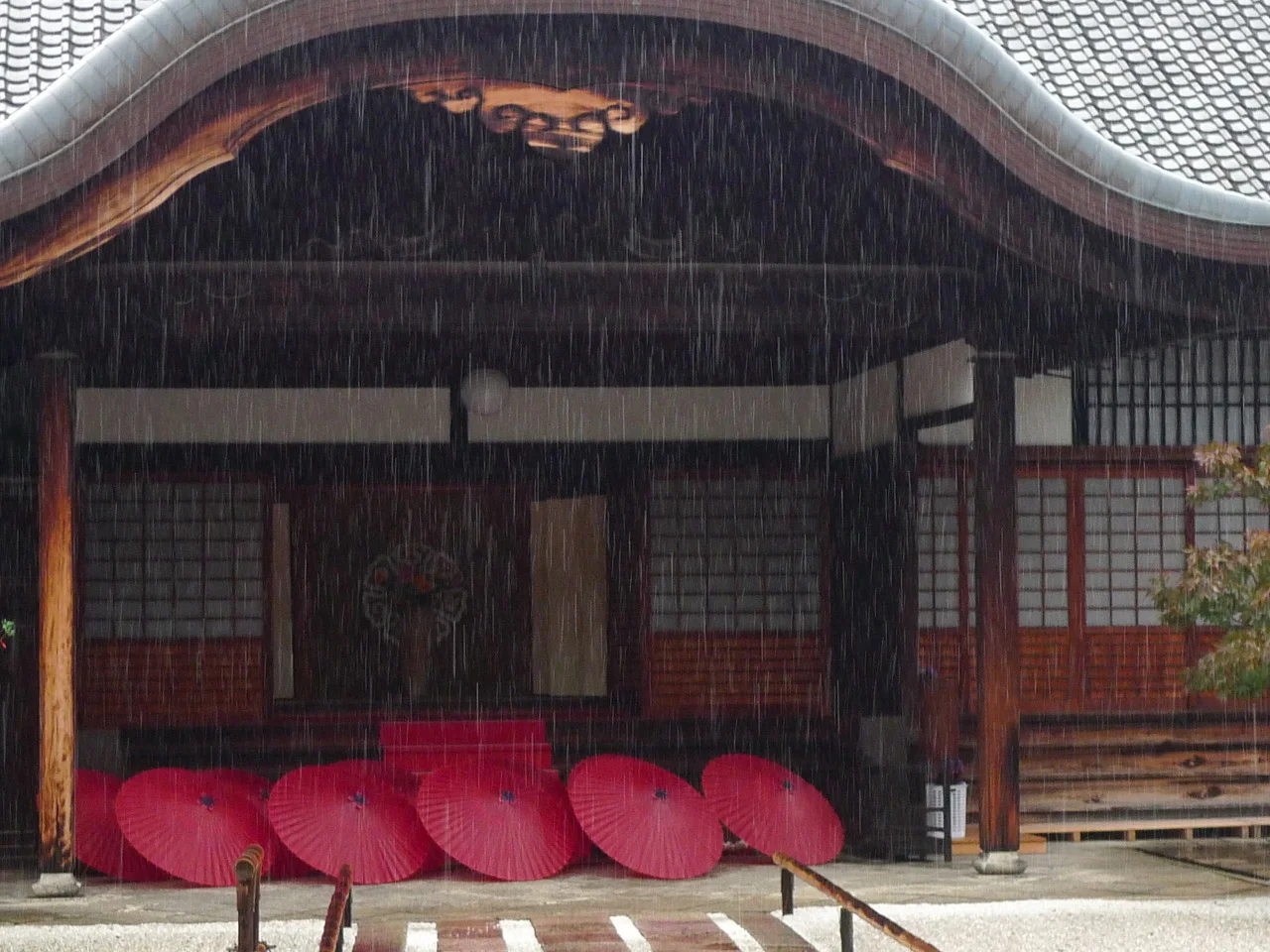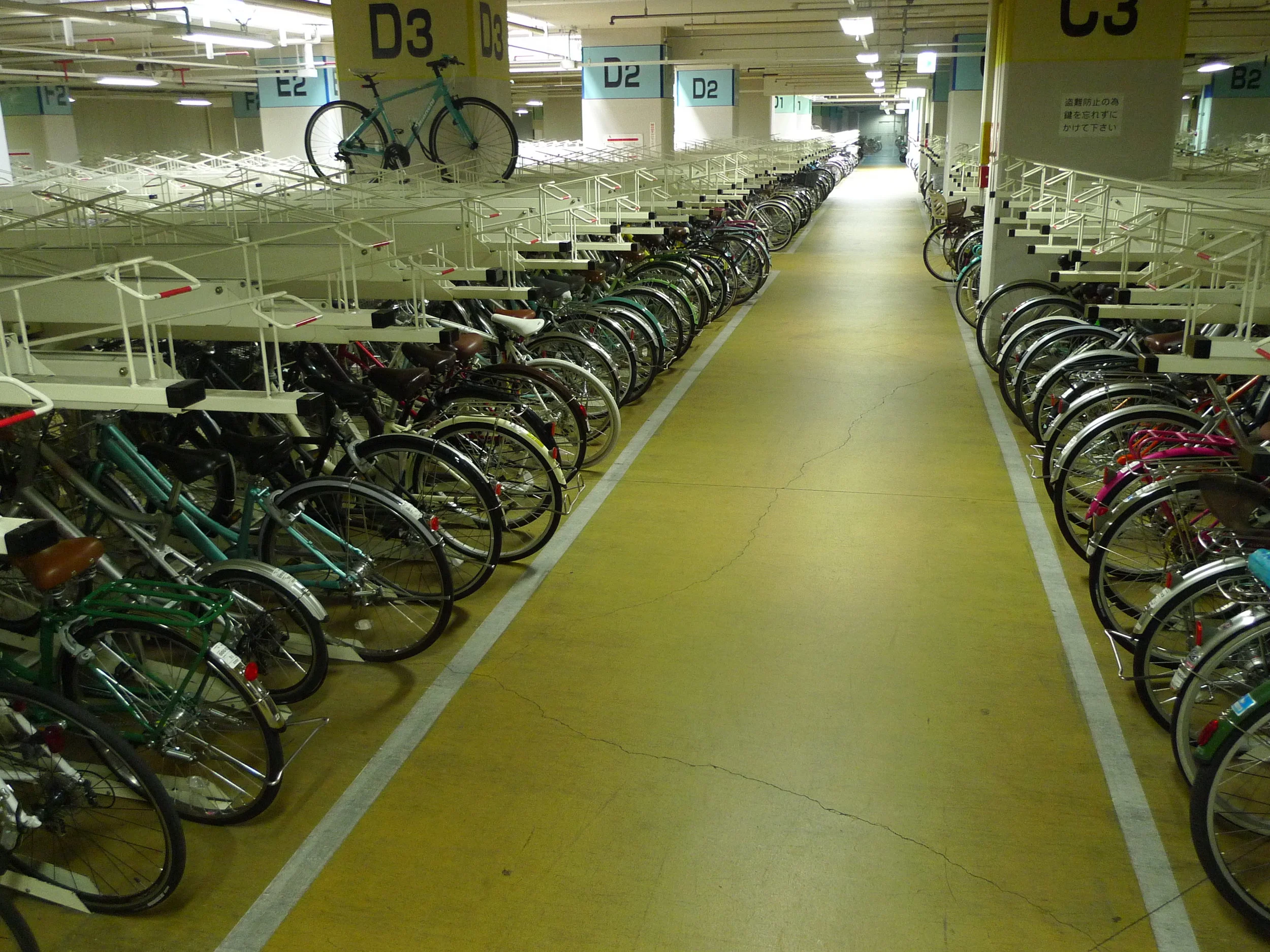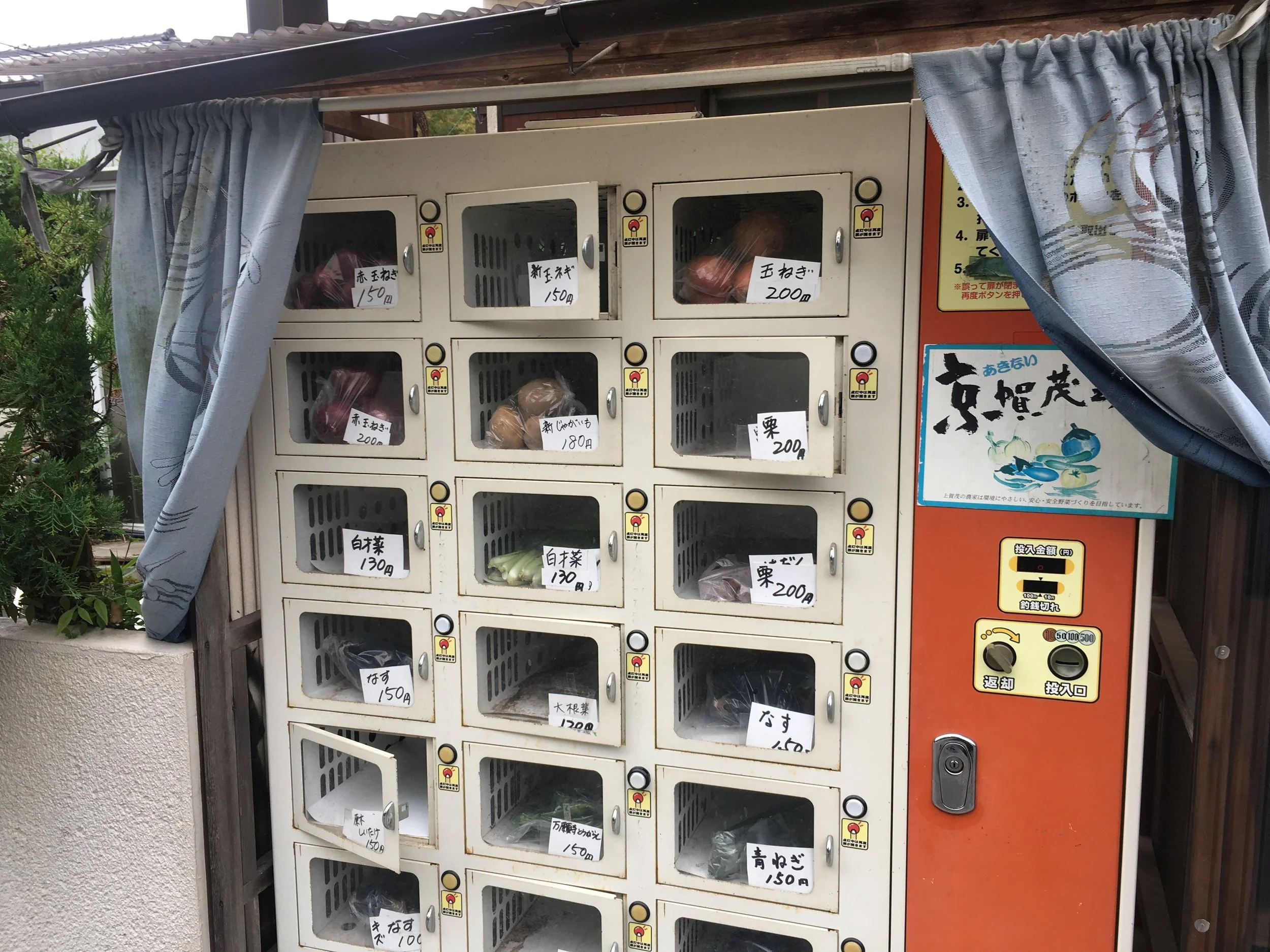Kyoto Diaries - 4
On the train from Sapporo to Lake Toya on the Pacific Ocean side. Hokkaido is an hour and a half flight N. of Kyoto, and feels very north. Fall is nearly over here, maybe some smattering of snow tomorrow, though the Ginko trees are in a last burst of brilliant yellow, carpeting the ground as the leaves fall with a luxurious gold. Maples are showing a kaleidoscope of colors from light green to yellow to burnt orange – all on the same tree! Its no wonder the Japanese go crazy over Fall and travel long distances to see the foliage.
Sapporo was built starting in the early 20th century. Its one of the newest cities of Japan and there are about 2 million inhabitants. Built largely for the car, it has broad boulevards, laid out with a grid system, most streets are named with coordinates- 4 West, 9 South Ave., etc. , downtown is lined with highrises, many of which seem to be filled with restaurants – 6 floors of eateries. There is what appears to be a entertainment/red-light district with short stay hotels, fancy cars, restaurants featuring girls in skimpy outfits, karaoke bars, girly shows, mixed in with small noodle joints, oyster bars, bars, garish lighted signs with lots of messages and announcements by high pitched women voices. All alive starting at dusk, which up here is now about 4:30 this time of year. The buildings along these streets are also lit up by big electronic billboards, pachinko seems very popular. But underground is where its happening. The huge malls along long, long packed corridors are brightly lit, warm, connected to the subway stations, and full of shoppers and stores, many of which are global chains stocked with goods made in China. There is a more edgy feel in Sapporo, more youth with piercings, tats, dyed and exotic hair, somewhat punkish, goth inspired fashion along with the hello kitty babydoll look too. And I saw a couple of homeless people, the first yet. Metro, bus, trolley system all work great, lots of bikes too, but its clear the city runs on a lot on car traffic. Hydrocarbons are evident everywhere from the kerosene tanks outside most dwelling units – used for heating – to the gas hotwater and cooking appliances, to cars, trucks, and diesel buses. You can see a giant oil refinery from the plane landing in Sapporo, right on the Sea of Japan. Sea level rise will not treat that infrastructure well. There is not much charming in Sapporo, though the Salmon museum was quite interesting, showing 18 different species of salmon, fry in tanks, from the northern hemisphere. I think there were some missing like the salmon of Mongolia, among others. Still the city is replete with big parks, wide green swaths down the center of the large boulevards, and river walks. The winter games were held in Sapporo, one can see why, it is a cold place in the winter. People dry daikon from their balconies, hanging it by its green top. I have seen persimmons drying, but never daikon. I had some excellent sea food, for which Sapporo is renowned: uni, scallops, shrimp at a nice restaurant – good sake too. During the day, though, at the fish market, one fights for counter-space at the fish market with the Chinese. . . Signs here are in Chinese and Russian, as well as English and there are a surprising number of tour buses. Northern territory cities – Petroplovosk, Sapporo, cities in Alaska – have a similar feel, modern era, hydrocarbon dependent, poorly built, rather ugly, somewhat sprawled out. There is a lot of geothermal though, and wood, one can imagine a different energy future.
In Sapporo, stayed in an Airbnb. Got to experience one of the new(ish) apartment buildings close up. The room was about 400 square feet with a miniscule kitchen, hotwater kettle, fridge, 2 gas burners. Worked fine for heating water and making coffee, would be perfect for the infinite variety of prepared foods available from 7-11 to the higher end grocery stores. The bathing room was, again, a molded plastic drop in unit with a shower head, tub and a sink. Tiny capsule wash room. Good fan dried it out during the day – never turned off -- combating the inevitable mold. Separate toilet, also a molded plastic unit. Floors were plastic wood. Walls were paper thin inside, though well insulated from hall noises, upstairs noises and outside. The door was very solid, like a bank vault. And the lighting was like all apartment lighting in Japan, it seems. A round ceiling lamp with a white circular fluorescent tubes. Totally blinding, but emitting poor light, weird combination. Very unpleasant feel though. The apartment is exemplary of new Japanese housing. Poorly built, poorly lit. But perhaps affordable? (The owner, clearly a smoker, had placed 7 air fresheners throughout, totally suffocating smell. I exiled them to the small filthy balcony).
Building quality in Japan is quite poor. Very few older buildings are insulated, windows are single paned, though in Hokkaido there are two sets of sliding windows, even three with the textured glass layer. Heating is spot heating with kerosene. In between heated spots, it is cold. It is like the old houses before hydrocarbons, when they had wood brasiers everyone huddled around in one or two rooms. Very small amount of heat, probably not huge amounts of wood used, but cold. It would be interesting to estimate whether the current heating system – not centrally driven – is more or less efficient per square foot with what we have in the US in cold areas: gas furnaces, or oil, that heat the whole house. Probably many of the existing houses in the US are not well built either. So. . . . most likely the Japanese (who have much smaller dwelling units by and large) though cold, are less energy intensive. I don’t imagine the kerosene heaters to be very efficient, and whew, the off-gassing must not be all that great for public health either. The new building we stayed in also had a kerosene heater, but the area was pretty small to warm up.
Riding on the train along the Pacific coast toward Toyako one sees enormous industrial complexes, piles of coal, chimneys, conveyors of various dimensions, big dormitory building-like complexes for workers that must have been built in the 50s and look very Soviet, run down and grim. There are also dairies, horse complexes, fisherpersons’s docks with piled nets along the shore, volcanic tree-covered mountains in the distance away. Rice has been long harvested but there are lots of greenhouses, solar panels, housing developments, and more industry. Cabbage still in the fields. There are also what appear to be fishing villages. A harsh environment with rich coastal soils. Its apparent sea level rise will cause a bit of havoc.
Last weekend, which was another typhoon dominated weather pattern, I escaped the drenching rain by a well-timed outing to the Textile museum of Kyoto. Located in an old merchants’ house in the traditional textile neighborhood of the city, it was quite fascinating. First one enters and is ushered into what must have been the main rooms, covered with tatami. One sits for a cup of tea and a sweet to gaze at the small interior garden. Then a walk up the stairs to look at old bolts of fabric in kimono width, cotton with stripes and patterns largely dominated by deep blues and deep tones. Then into a room with ceremonial kimonos, whose fabric looks like there is embroidery, but that is in fact an intricate weaving technique that is still practiced. . . . in the next room! Walking down the hall, I was ushered into the weaving room, a largish space with maybe 30 looms and a back area where there is still spinning of silk. The looms had about 10 harnesses (or more), the warp thread was extremely fine and kimono width. They use jacquard type wooden looms, technology imported from France in the 18th century, augmented with a floppy disc reader that raises the warp threads at the right time to make very, very intricate patterns. But what was also extraordinary was the hand work that was involved in threading the weft to create the intricate patterns – displayed on a sheet of paper next to the weaver. The weaving was done on the back side of the fabric, so a mirror was underneath the weaving so the weaver could see the pattern emerging. Such skill! Such dexterity and intimate knowledge acquired over years of practice. Really beautiful. Kimonos made of the woven fabrics were available for sale in yet another room.
Riding my bike through the neighborhood I could hear looms clanking behind anonymous walls, the neighborhood is still actively engaged in producing textiles. In contrast to Sapporo, Kyoto is a precious jewel box. It is relatively affluent, lots of universities, and retains old and beautiful architecture. It was the Imperial seat and feels like it. It could be deceiving about the rest of Japan. I have yet to go to Osaka, 15 minutes away on the Shinkansen, with 10 million people crammed together. And, of course, revisiting Tokyo, but that would require another month here! What is planned is a visit to the remote Noto peninsula, land of 1,000 rice fields, on the Sea of Japan. Of course there are also the southern islands of Okinawa and Kyushu, but not enough time this stay. A long archipelago of contrasts and similarities. Those paintings you see of tree covered mountains and mist, bamboo intermixed with conifers, are an everyday sight on the mainland. Up here, it's a bit different. There is Sakhalin fir and spruce, Japanese oak, birch, painted maple and the spectacular larch, now a brilliant yellow, the only trees left with color on the hills. Many trees lose their leaves so the forest looks gray and denuded compared to further south where there are firs and pines.
Sitting in the ryokan, I can look over the large lake toward a looming volcano. All day has been off-and-on bitter cold rain showers and wind with little spurts of sun. Late Fall is not the high season, that is for sure. The penultimate volcano eruption created the local hot springs. Hotel has a big hotspring bath, separated by gender. It's a bit crumbling, but the water is divine.
Summer is best and attracts lots of tourists, many Chinese in tour buses. It's a stunning area dominated by semi-to-active volcanos, constantly shaping and reshaping the topography. There is a huge dome shaped island the juts up from the middle of the lake. This area is part of the ring of fire and there are volcanos in all directions. There is a vibrant local produce scene here, one hip coffee shop. Not much else. But traveling on the train, there are gardens, hoop houses for produce all around.
May lightly snow tonight, hot spring soaking before bed seems like the right thing.





